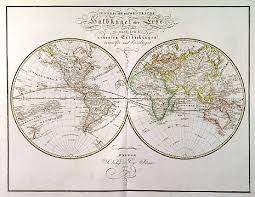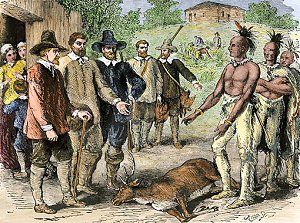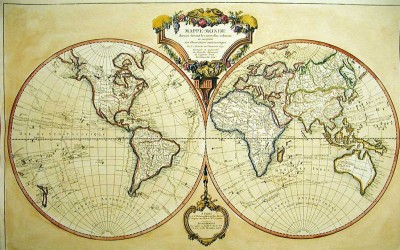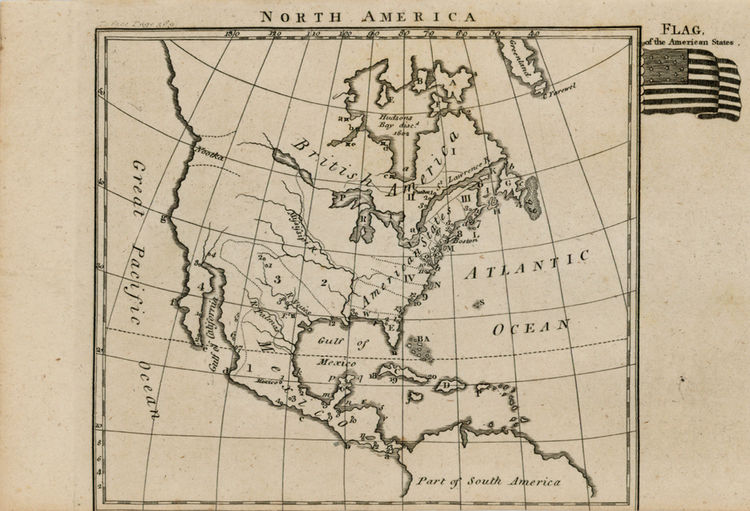Related Issue 2: To what extent should contemporary society respond to the legacies of historical globalization?
| Site: | MoodleHUB.ca 🍁 |
| Course: | PAVE Social 10-1 |
| Book: | Related Issue 2: To what extent should contemporary society respond to the legacies of historical globalization? |
| Printed by: | Guest user |
| Date: | Sunday, 30 November 2025, 8:55 AM |
Description
Related Issue 2 To what extent should contemporary society respond to the legacies of historical globalization?
Introduction
Here is an example Schedule for this unit.
What are the origins and consequences of historical globalization on Indigenous and non-Indigenous peoples?
| Some historians trace the historical beginnings of globalization to the first centuries of world history. Global contact for trade purposes was well-established throughout the world. The goods and technologies from one part of the world were very popular to the inhabitants of other parts of the world. There are historical maps of trade networks between Europe and Asia. From the perspective of many European empires, this trade network was vital to their power and wealth. |
|
|
As demand for goods and technologies increased, those wishing to trade looked outward to new areas for such resources. European and Asian explorers embarked on voyages westward. This sparked the initial contacts between Europeans and Asians and the original inhabitants of the Americas, Africa, and Asia. Module 2 focuses on the relationships between Indigenous and non-Indigenous peoples. You will explore primarily the early relationships between the Aboriginal peoples of North America, the Indigenous peoples of these lands, and the Europeans, the non-Indigenous peoples who arrived in these lands.
|
Indigenous peoples: the original peoples of a region Non-Indigenous peoples: inhabitants who arrived and settled in the land of the original peoples Aboriginal peoples: defined by the Constitution Act (1982) to refer to Indian, Inuit, and Métis peoples of Canada |
| The settlement of Canada by Europeans during the fifteenth to seventeenth centuries is the result of expeditions by European explorers to seek resources in North America. Other European explorers navigated routes in other directions that led to contact with the Indigenous peoples of Africa, Asia, and Australia. The relationships that emerged were diverse in nature. These relationships could be economic, social, and/or political in nature depending on the ideas, values, and beliefs each group brought with them. In some circumstances there were mutual benefits to contact between Aboriginal and European peoples. In other circumstances the resources were valued more than any possible relationships with Aboriginal peoples. These circumstances placed Aboriginal peoples in unequal relationships where the relationship to the land, the ways of life, and the resources were exploited for the benefits of European consummation and power. |
|
| There are many perspectives on the relationship between Indigenous and non-Indigenous peoples or, as explored in this module, the Aboriginal and European peoples as they interacted in North America. You will develop understandings of the origins of globalization and the relationships and legacies—economic, political, and social—between these groups. |
|
What were the historical reasons and legacies?
Many of the global issues today have a basis in the historical contact and relationships that develop between Indigenous and non-Indigenous peoples. In this section, you will explore contacts and relationships. You will examine the factors that led historically to cultural contact between groups. You will explore the world views that shaped those relationships and the foundations that created historical globalization. You will analyze the relationship between historical globalization and the economic, political, social, and cultural legacies evident in the world today.
Indigenous peoples: the original peoples of a region
Non-Indigenous peoples: inhabitants who arrived and settled in the land of the original peoples
Aboriginal peoples: defined by the Constitution Act (1982) to refer to Indian, Inuit, and Métis peoples of Canada
First Contacts
What led to contact between Indigenous and non-Indigenous peoples?
Reflection to do before you begin the lesson: Interactions
|
In this lesson, you will examine the factors that fostered contact between Indigenous and non-Indigenous peoples in the Americas. Geographically, you will examine the variables of location, distance, and resources of the Americas that led Western European voyageurs to travel across the Atlantic Ocean. You will look at how population growth and religious values and beliefs in Western Europe also influenced the drive to make contact with the Indigenous peoples of the Americas. As well, you will examine the economic factors that led countries such as Spain, Portugal, France, and England to approve of voyages of exploration and discovery to achieve economic wealth and power. The information you gather will support your inquiry into these questions:
|
Americas: the land of the Western Hemisphere: North America, Central America, and South America; also referred to as the New World in fifteenth-century European perspective |
This will help you respond to the section question: What were the historical reasons and legacies?
The development of relationships can succeed or fail depending on first impressions. Consider your first impressions when you attended your first class. How did the impressions of your teacher and fellow classmates influence whether or not you looked forward to being in the course?
More than just the fact that these were strangers to each other guided how the historical relationships between Indigenous and non-Indigenous peoples in the Americas would develop. In the twenty-first century, much thought and effort is devoted to educating diplomats, businesspeople, and travellers about cultural etiquette, protocol, and body language. Taking the wrong step or making the wrong move could lead to failed diplomacy or business deals—even to an unsuccessful job interview.
Cirque du Soleil Artists Prepare for Performances in Macau
|
In August 2008, the famous acrobatic troupe Cirque du Soleil began ayear-long schedule of performances in Macau. Macau is a former Portuguese colony of Chinese–Portuguese heritage whose sovereignty was returned to the People’s Republic of China in 1999. |
|
Factors Fostering Possible Contact
Although the story of Columbus is often told in the context of an “accidental” landing on the shores of North America instead of India, were there possible factors, such as geography, that led to first contact?
What factors made contact possible?
Backgrounder on the Age of Discovery
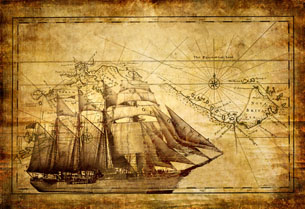
Travel prior to the fourteenth century often took a long time and was challenged by physical terrain. Journey outside of one’s European community was a lengthy process, and any goods brought back were valued for their rarity as well as for the effort required in transporting them back to the community.
India and China were considered key suppliers of goods highly sought after by Western Europeans. Travel from Portugal and Spain was typically eastward to India and China. Advances in ship and navigation technologies by the fourteenth century offered opportunities to travel faster and further. You can view such advances by researching the background behind the astrolabe, caravel, and carrack.
When you look at a map, note that travel overland would cross through many countries and that sailing would require circling Africa to reach India or China. With the new technologies, countries began to compete to find faster access to supplies to profit from sales to markets at home. The Crusades made overland routes increasingly less friendly for European travellers.
Sparked by adventure and competition, a series of expeditions set out to find new routes around the globe. Prince Henry of Portugal (also known as Henry the Navigator) financed many sea ventures that made Portugal the leader of expeditions around the world. In 1492 Christopher Columbus petitioned the ruling monarchs of Spain to finance his own expeditions of discovery westward in search of a new route to India. Financed by the British monarch, John Cabot (a Venetian explorer also known as Giovanni Caboto of Italy) reached the coast of Newfoundland in 1497. Jacques Cartier sailed to North America under the French flag in 1534.
Legacies: passed on from the past
In the perspectives of Western Europeans at the time, this was the Age of Discovery. These were voyages of discovery because Europeans knew very little about what laid to the west. They were unaware that they would find people who already inhabited these continents. These were peoples who were indigenous to the lands that Columbus and other explorers would discover. Many Europeans would refer to their lands as the New World. From first contact, diverse groups would enter into relationships that would create legacies that continue to be evident to this day.
The groups you explore are known by diverse names. Use this list for reference:
-
Indigenous peoples – the original people in any region
-
Non-Indigenous peoples – inhabitants who arrived and settled in the land of the original people
-
Aboriginal peoples – defined by the Constitution Act, 1982 to refer to Indian, Inuit, and Métis peoples of Canada
-
First Nations – the name used by the member nations of the Assembly of First Nations (as adopted by all chiefs in Canada in an Assembly of First Nations declaration, 1980)
-
Western Europeans – generally refers to members from countries such as England, France, Spain, and Portugal
-
Europeans – generally refers to members from the continent of Europe

Assignment
Factors Fostering Possible Contact while you read the following information here and below.
Multimedia
Please refer to this link
username: LA410 and password: 6943
Record the geographic factors that you can identify on the map in your copy of Factors Fostering Possible Contact Between Indigenous and Non-Indigenous Peoples in the Americas.
Comparing the Impacts
Capitalism is generally understood as an economic system based on four characteristics:
- People have the right to private property.
- The necessities of production, distribution, and ownership were in the hands of individuals and companies.
- Individuals engage in economic activity primarily for profit.
- Individuals compete to reach their economic goals.
Understandings of Mercantilism
- The wealth of a country like Spain could be measured by the amount of bullion such as gold or silver that it possessed, supported by influx of bullion from the New World.
- It was necessary to export more than import in order to maintain a balance of gold in its possession.
- A system of international business ventures sponsored by the monarch to ensure the supply of bullion
- Trade activities were strictly regulated.
- Naval power was essential to maintaining the wealth and power, especially overseas.
- Colonies could provide captive markets for manufactured goods and sources of raw material.
- A large population was needed to provide a domestic labor force to people the colonies.
Reflection
Contact Between the Groups: What, Where, Why, When, and How?

Read
In your textbook read pages 116-126.
Quiz
What led to contact between Indigenous and non-Indigenous peoples? Assess your understandings of the factors, the contacts, and the views surrounding the first meetings between Indigenous and non-Indigenous peoples. Select the most appropriate response to the questions in Contact between Indigenous and Non-Indigenous Peoples.
There are 5 questions on this quiz. Give yourself 20 minutes to complete.
Comparing the Impacts of Contact Quiz
The historical origins of globalization began with first contact. By the thirteenth century, the contact Western Europeans established with the Indigenous peoples of the Americas was facilitated by advancements in technology that enabled the overseas voyages. The reasons for contact are diverse. Some of the voyages were driven by economic and social motives. Other voyages occurred because of geographic proximity or the search for faster routes to India. Columbus’s first contact with Taino peoples of the Bahamas, Cartier and the Mi’kmaq in 1534, and Portuguese explorer Cabral’s meeting with the Indigenous peoples of Brazil are some examples of the contacts between Western Europeans and Indigenous peoples. In the next lesson you will examine legacies of the economic, political, and social relationships that developed between them.
First contact between Indigenous and non-Indigenous peoples was not restricted to North America nor did they only take place after the thirteenth century. You can research further by exploring the following topics:
-
Silk Road
-
Marco Polo
-
Ibn Battuta travels to Asia and Africa
-
James Cook
Petition for Expedition
Many of the histories and experiences of the Indigenous peoples of the Americas recount how first contact with Western Europeans led to relationships that deepened the cultural interaction between these two groups. In this lesson you will examine the motives for establishing a relationship and the perspectives held by each group about the relationship. Use the selections to gather background as you inquire into these two questions:
-
What were the motives that led to the establishment of a relationship?
-
World Views – What perspectives did each group have about the relationship?

Assignment
Please complete your Petition for Expedition Assignment now.
Reflection
Write a reflection about motives to travel to unknown lands. What influence might your motives have on the first contact between you and the people you meet?
Motives and Relationships
What were the motives that led to the establishment of a relationship?
Often traditional history accounts begin with stories between Indigenous and non-Indigenous peoples after the European conquest of the New World. Take a step back and find out what motives led to the establishment of relationships (ranging from cultural, economic, mutual, and hostile in nature) between Aboriginal peoples and Europeans in North America.
Use this Motives Checklist to organize your ideas.
Motives
1) CURIOSITY
European Motives
The stories about the travels of Marco Polo created interest and curiosity in finding out more about the world.
Explorers, such as Bartholomew Diaz and Christopher Columbus, were driven by dreams of gold, glory, and spreading the word of God.
2) ECONOMIC
Read the following about the economic activities that drove explorers such Columbus to seek faster and more efficient trade routes.
European Motives
Portugal and Spain (and later Holland, France, and England) were motivated by profit. Goods such as cotton, silk, precious stones, spices, and slaves from India, China, and Persia had created a market demand that was difficult to maintain with current trade routes and supplies. Travel through central Asia was risky and costly. New sources and cost-efficient routes became the priority of the Portuguese monarchy in the fifteenth century.
Aboriginal Motives
Many First Nations groups along the coasts of North America sought some form of trade with newcomers to the continent.
Despite the lack of formal trade relations until much later, the Inuit found value in salvaging iron, wood, and European goods from stranded or lost ships during early contact.
The Mi’kmaq encouraged Jacques Cartier to come ashore in 1534. They celebrated this first contact with a Mi’kmaq ceremony and communicated the intent to trade with a few words adapted from earlier trade with Basque or Portuguese traders.
The Ouendat nation had many well-established trade networks with other First Nations groups and easily adapted the French as trade partners into their trade system. They insisted that the French trade in the Ouendat language with Ouendat protocol. In Ouendat society the European goods were a sign of prestige and status.
The Haudenosaunee entered into an alliance with the Dutch in 1609 to trade furs for firearms.
The Cree welcomed Henry Hudson in 1611 with the intent of exchanging European goods for furs.
3) POLITICAL
European Motives
The monarchs of Portugal and Spain viewed exploration as a means of extending the influence of their kingdoms by establishing their presence in new territories.
Henry the Navigator had many motives for financing Portuguese ventures westward. He was curious about the land beyond Portugal. Trade was vital to the power of Portugal. The conversion of new peoples to Christianity would decrease the spread of Islam.
4) RELIGIOUS
Read "Ideas and Opinions" on page 119 of your textbook, Perspectives on Globalization, about underlying values of Haudenosaunee culture and the view of Pope Alexander VI, 1492 CE.
European Motives
A critical motivator in the early days of exploration was Christian conversion. It motivated the Christian monarchs not only to seek out an ally against Islam but also to find vast populations to convert to the Christian faith. Many Europeans saw exploration and discovery as a logical extension of the Crusades of Christianity against Islam.
5) SOCIAL
European Motives
In connection with the desire to create new converts in Christianity, Europeans were motivated to expand European knowledge and values in the new lands.
Aboriginal Motives
In Mi’kmaq world view it was accepted that the arrival of Europeans led to the sharing of the land with the newcomers.
Read "How Did Cultural Contact Affect the Beothuk?" on pages 122 to 124 of your textbook, Perspectives on Globalization.
Read "How Did Cultural Contact Affect Potlatch Societies?" on pages 125 and 126 of your textbook, Perspectives on Globalization.
Reflection
Write a reflection on how motives guided the first meetings. In all first meetings, are there common, diverse, or conflicting motives on both sides?
World Views
Relationships involve perspectives, opinions, and assumptions. The Tainos people met Christopher Columbus in 1492 with perspectives, opinions, and assumptions based on their world view. Jacques Cartier came ashore with assumptions he held about the Innu people he met in 1534. What personal assumptions do you bring into meeting with someone the first time? What is the basis of your assumptions? Was world view the basis of Columbus’s and Cartier’s assumptions?
A world view is a collection of ideas, values, and beliefs that has developed over time within a group of people who share a common history and experience. Your shared world view influences how you see your place in the world and your relationship with nature. It involves understandings that may be religious, spiritual, both, or non-religious of how your place in the world began and possibly ends. It promotes ideas and beliefs about what is valued the most in society. World view determines the ways people in the group behave. In this Explore you will begin by examining your own assumptions and then the values and beliefs that formed the foundations of Aboriginal and European world views.
Quote
| “I see in the near future a crisis approaching that unnerves me and causes me to tremble for the safety of my country. As a result of the war, corporations have been enthroned and an era of corruption in high places will follow, and the money power of the country will endeavor to prolong its reign by working upon the prejudices of the people until all wealth is aggregated in a few hands and the Republic is destroyed.” |
Gather and discuss your own personal assumptions. Examine the quote and reflect on your assumptions about the speaker. Share with two or more people and examine the assumptions all of you have. Discuss on what basis you made these assumptions. Reveal the identity and context of the speaker (by Googling the quote!) and discuss how close or far your assumptions were to reality.
Read
Examine the two diagrams of Aboriginal and European world views on page 116 of your textbook, Perspectives on Globalization.
An assumption is a belief or value that is applied to an event and/or a person, his or her appearance, values, beliefs, and behaviour, and perceived as valid by the individual or group.
What assumptions did Europeans have?
-
For many Europeans the territory to the west was undiscovered.
-
Europe was the Old World and the new territories would be New Worlds, reflections of the best that European society and civilization held.
-
The Indigenous population was often labelled as heathen because of their non-Christian faith.
-
The Roman Catholic Church proclaimed itself as the one universal faith of humanity. Contact became a religious opportunity. The Church sent many missionaries along with the explorers. The pope at the time endorsed the travels to new territories with the goal of converting non-Christiansto what was considered by many Europeans as the one true faith—Catholicism.
-
Portugal and Spain were countries that believed land expansion was achieved through conquest by strong military kingdoms over weaker peoples.
-
For many Portuguese at this time, the pursuit of a policy of overseas expansion was an answer to poverty.
-
Jacques Cartier was one of the first to refer to the Indigenous peoples of North America as sauvage. He used it in reference to the Indigenous relationship to the land. This term was later equated to heathen and the opposite of the perspective of a European civilized society.
-
Reciprocity was the social, economic, and political foundation of many Pacific Coast nations. They encouraged trade for European goods to accumulate goods that would reflect higher prestige and wealth in their potlatch ceremonies.
Read
Select one of the following read options in your textbook, Perspectives on Globalization.Add notes on values and beliefs into your Exploring World Views chart below.
-
“Different World Views,” pages 119 to 121; then examine the world views in the cartoon on page 132
-
“The Effects of Cultural Contact on North American Society,” pages 127 and 128, about the Six Nations Confederacy and how their political structure is influenced by their world view
Reflect
Now Exploring Worldviews for the readings above.
|
Historical Globalization
Historians differ on when historical globalization actually began. It may have begun when Arab traders travelled to Asia in 100 CE. Many historians begin with the trade relationships that emerged after the Conquest of the Americas by Spain, Portugal, France, and England. Other historians formally acknowledge the nineteenth century as the starting point for historical globalization when the increased manufacturing and trade of goods globally created mass change in the societies of both Indigenous and non-Indigenous peoples.
The eighteenth century was a time period in Western Europe when many ideas emerged about how the economy should operate and how people should live and be governed. You will explore these ideas in this lesson and examine the legacies of the application of these ideas on the societies of both Indigenous peoples and non-Indigenous peoples. Your work in Explore will gather understandings to these questions:
-
What ideas, values, and beliefs formed the foundations of historical globalization?
-
What were the legacies of historical globalization?
Reflection
Open the Philosophy of My Jeans assignment here.
The ideas, values, and beliefs that guide a person’s choice and purchase of jeans are not just individual views. You may be unaware that many of your consumer ideas and views have been shaped by the economic system in place. Many of Canada’s early trade relationships have reflected the ideas of mercantilism, imperialism, capitalism, and industrialization. Capitalism has become a contemporary force behind many economic and business policies.
Historical relationships between Indigenous and non-Indigenous peoples were also based on these ideas. How did these ideas shape the foundations of historical globalization?
Check out
Foundations of Historical Globalization
LA410/6943
Read
Read about mercantilism, the values behind capitalism, industrialization, the Industrial Revolution, imperialism, and eurocentrism on pages 134 to 152 in Perspectives on Globalization.
Quiz
Check your understanding of the ideas that shaped the foundations of historical globalization. Make sure you have done the reading above! 9 questions on this quiz. Give your self 30 minutes to complete.
Mapping the Exchanges and Legacies
What were the legacies of historical globalization?
As cultural groups make contact and interact as peoples, impacts on culture, identity, and society can occur. Impacts to culture and identity may come to a group of people in the form of acculturation, accommodation, integration, marginalization, and/or assimilation. Impacts to society may be in the form of population change, technological advances, and/or the rise or decline of a society. These impacts can become legacies that are passed down through the generations and that continue to be issues in the lives of people today.
Assignment
Please complete Mapping the Exchanges and Legacies Assignment at this point.
The emergence of historical globalization by the nineteenth century has its foundations in the world view of Western Europe. Mercantilism, capitalism, imperialism, industrialization, and Eurocentrism promoted ideas, values, and beliefs that created massive changes in the cultures and identities of Indigenous peoples and non-Indigenous peoples. The economic, political, social, and cultural legacies of historical globalization have created issues that continue to demand responses today.
Reflection of Two Images
| Look at the editorial cartoon on page 149. What are your first impressions? What relationships among the peoples of the world are implied? |
| Turn to page 154 and look at the Visual on the bottom of the page. This image was created in 1877 and shows a Hudson's Bay Trading store on Hudson Bay. Whose perspective is shown? How might the visual be different had a First Nation artist drawn the scene? |
Investigating the Event
What is a fair-minded account?
Relationships have different perspectives. Your understandings of a historical event may be influenced by the perspective presented. A balanced understanding of the event requires recounting the story from multiple perspectives.You will complete the following challenge to analyze how a historical account may be biased by the presentation of only one perspective.
Read
Open your textbook to page 153-155.
Assignment
Choose one of the relationships featured in this section or research one that interests you. You may choose a relationship involving an Indigenous group of Canada or from elsewhere in the world. Select a shared historical incident that has risen out of capitalist, industrialist, or imperialist world views: for example, Doctrine of Discovery of 1493; Royal Proclamation of 1763; Indian Act, 1876.
Summarize the main details of the event.
Please complete the Investigating the Event Assignment assignment now.
Your understandings of historical globalization are the basis of understanding that the cultural contact between Indigenous and non-Indigenous peoples had many historical reasons, motives, and perspectives. Many of the present-day economic, political, social, and cultural legacies are rooted in historical globalization.
Definitions
Age of Discovery: a time period between the fifteenth to seventeenth century in which Europe undertook voyages to explore territories previously unknown to them; also referred to as the Age of Exploration
Americas: refers to the land of the Western Hemisphere (North America, Central America, and South America); also referred to as the New World in fifteenth-century European perspective
Capitalism:
- Capitalism is generally understood as an economic system based on these characteristics:
- People have the right to private property.
- The necessities of production, distribution, and ownership are in the hands of individuals and companies.
- Individuals engage in economic activity primarily for profit.
- Individuals compete to reach their economic goals.
- Money is necessary for manufacturing and trade.
- The acquisition of money means that profit was accumulated.
Conquest of the Americas: refers to the Spanish claim of most of the territories of the Western Hemisphere beginning in the fifteenth century
cultural contact: the meeting and possible exchange of knowledge, values, beliefs, and language between two distinct cultural groups
environment: the climate, soil, living things, and the social and cultural conditions
Eurocentrism: the world view that Europeans are superior to other cultures and groups; especially in comparison to the Indigenous peoples of the territories they conquered
First Contact: the initial meeting between two cultures; usually refers to the first meeting between Aboriginal peoples and Europeans in the Americas
historical globalization: refers to the time period of the first expansion of contact, connections, and trade between communities and individuals around the world
The Age of Discovery is often considered the historical global event that shaped historical globalization.
imperialism: the imposition of control over another group by military, social, cultural, and political force and the exploitation of peoples, land, and resources
Indigenous and non-Indigenous peoples:
- Americas Indigenous peoples – refers to the original peoples of a region
- Non-Indigenous peoples – inhabitants who arrived and settled in the land of the original peoples
- Aboriginal peoples – defined by the Constitution Act (1982) to refer to Indian, Inuit, and Métis peoples of Canada
- First Nations – in 1980, all the chiefs in Canada adopted an Assembly of First Nations declaration to call their member nations “First Nations”
- Western Europeans – generally refers to members from countries such as England, France, Spain, Portugal
- Europeans – generally refers to members from the continent of Europe
industrialization: the transition from an agricultural-based economy to a manufacturing base; also refers to the transition from hand-made products to machine-made products
This is often an indicator of a highly developed country.
legacy: something passed on from the past
mercantilism: a policy of building the gold and silver wealth of a country through the sale of exports, strict trade regulations, and the sponsorship of colonial possessions
mutual benefit: an advantage for both sides
protocol: the set of rules that dictate behaviour
trade: to buy, sell, or exchange goods or services
tribute: a payment, tax, or tariff to another out of honour or obligation
Editorial Cartoon
First check out this tutorial about how to analyze a cartoon:
Assignment
The origins of the current process of globalization can be found in the early contact and trade relationships of the thirteenth to nineteenth centuries. These early contacts and connections may have been welcomed by Indigenous peoples or imposed by Europeans who travelled to lands previously unknown to Europeans. In many situations other aspects of the relationship emerged as the two groups interacted. The world views underlying these relationships were factors in how well the two groups related with each other and the presence or lack of equality between them. Many of the Western European ideas about capitalism, industrialization, and society impacted the relationships and led to the establishment of imperialism in the lands of Indigenous peoples, and they created legacies of challenges to Indigenous cultures, identities, and citizenship.
These legacies will be the foundation of Related Issue 3, where you will examine the responses to the historical legacies of globalization and imperialism.
RI 2 Source Interpretation
This is your first source interpretation assignment of Social Studies course. You will have 3 sources to examine and respond to. In your response you will have to:
- Interpret each source and demonstrate your understanding of how each source links to historical globalization.
- Explain one or more of the relationships that exist among all three sources.
|
Paragraphs 1, 2 & 3 Write 1 paragraph for each source. For each source paragraph you must:
–Explain what is happening in the source
•Explicit meaning (clear/obvious)
•Implicit meaning (hidden/embedded)
–Explain the main message of the source
•What does the author/photographer/cartoonist want the viewer to understand?
–Relate the source to the concepts you have learned in Social Studies
•Use key vocabulary
•Think about concepts of globalization studied- Eg. 4 dimensions: economic, social, political, environmental and whether the source shows an opportunity or a challenge.
|
|
Paragraph 4 In the fourth paragraph find a relationship or connection between two or more of the sources. –Example: Source 1 and 3 show an economic dimension of globalization. All three sources show how the environment can be negatively effected.
•You must give reasons for your answers.
–Example: Source 1 and 3 show an economic dimension of globalization through their debate about transnational corporations and their pros and cons. All three sources show how the environment can be negatively effected by poor governance and greedy economic practices.
|
Essay Assignment
Please click the following link to open the assignment - Social Studies Source Interpretation Assignment #1.
Here is the rubric you will be marked on for your source interpretation assignment. Please read over to know what is expected of you from this assignment.
|
|
|
Interpretation of Sources |
|
Identification of Relationships |
|
Quality of Communication** |
|
/12 |
Interpretation of sources includes:
Note: You must address ALL three sources. |
/6 |
Identification of Relationships includes:
Note: You may discuss the relationship(s) in one part of the response or throughout the response. |
/2 |
Quality of Communication includes control of:
Note: You are expected to use paragraph form. (see side bar for more information) |
|
|
Excellent
E |
4 4 4 |
Interpretation of the source is sophisticated, insightful, and precise. Linkages to the principles of (globalization, nationalism, liberalism) are accurate, perceptive, and comprehensively developed. |
6 5.5
|
Relationship(s) are accurately and perceptively identified. The explanation is thorough and comprehensive |
2 |
Vocabulary is precise and deliberately chosen. Sentence structure is controlled and sophisticated; ideas are judiciously organized. The writing demonstrates skillful control of mechanics and grammar. |
|
Proficient
Pf |
3 3 3 |
Interpretation of the source is sound, specific, and adept. Linkages to the principles of (globalization, nationalism, or liberalism) are consistent, logical, and capably developed. |
5 4.5 |
Relationship(s) are clearly and capably identified. The explanation is appropriate and purposeful. |
1.5 |
Vocabulary is appropriate and specific. Sentence structure is controlled and effective; ideas are purposefully organized. The writing demonstrates capable control of mechanics and grammar. |
|
Satisfactory
S |
2 2 2 |
Interpretation of the source is adequate, straightforward, and conventional. Linkages to the principles of (globalization, nationalism, or liberalism) are relevant and developed in a generalized fashion. |
4 3.5 3 |
Relationship(s) are generally and adequately identified. The explanation is straightforward and conventional. |
1 |
Vocabulary is conventional and generalized. Sentence structure is controlled and straightforward; ideas are adequately organized. The writing demonstrates basic control of mechanics and grammar. |
|
Limited
L |
1 1 1 |
Interpretation of the source is confused, vague and/or simplistic. Linkages established to the principles of (globalization, nationalism, or liberalism) may be incomplete, superficial,& imprecise. |
2.5 2 |
The identification of relationship(s) is superficial and of questionable accuracy. The explanation is confusing, overgeneralized and redundant. |
0.5 |
Vocabulary is imprecise, simplistic, and/or inappropriate. Sentence structure is awkward; ideas are ineffectively organized. The writing demonstrates a faltering control of mechanics and grammar. |
|
Poor
P |
0.5 0.5 0.5 |
Interpretation of the source is minimal, inaccurate and/or copied from the source. Linkages to the principals of (globalization, nationalism, or liberalism) are disjointed, irrelevant, and demonstrate little/no understanding of the assigned task. |
1.5 1 |
The identification of relationship(s) is minimal. The explanation is off topic and undeveloped. |
0.4 0.2 |
Vocabulary is overgeneralized and/or inaccurate. Sentence structure is uncontrolled; organization of ideas is confused and/or lacking. The writing demonstrates a large lack of control of mechanics and grammar. |
|
Insufficient INS |
|
Does not attempt to address the assignment or is too brief to assess in any scoring category. |
||||
Unit Test
You are now ready for the Unit One test. It is a 41 questions Multiple Choice Quiz. Give yourself at least 2 hours to complete.
This quiz must be supervised and no books/online resources are to be used.
